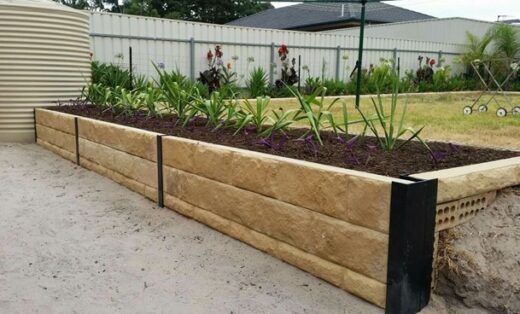Salt ice melt: a comprehensive guide to safe and effective use, Security design guide, protection advice
Salt Ice Melt: A Comprehensive Guide to Safe and Effective Use
31 December 2024
When winter’s icy grip descends upon us, transforming sidewalks and driveways into treacherous skating rinks, the humble salt ice melt emerges as a crucial ally in the battle against slippery surfaces. This readily available and cost-effective solution has been a staple for winter maintenance for decades. Yet, despite its widespread use, many people remain unaware of the nuances of salt ice melt application, often leading to ineffective results, environmental damage, or even safety hazards.
In this comprehensive guide, we will delve into the world of salt ice melt, exploring its various types, proper application techniques, safety considerations, and environmental impact. Whether you’re a homeowner tackling your driveway or a business owner responsible for maintaining safe walkways, this article will equip you with the knowledge to use salt ice melt effectively and responsibly. We’ll also discuss options for procuring bags of salt for snow from bulk salt suppliers, ensuring you have the resources to combat winter’s icy challenges.
Understanding the Science Behind Salt Ice Melt
Salt ice melt works on a simple yet powerful scientific principle: it lowers the freezing point of water. When salt is applied to ice or snow, it dissolves into a brine solution, disrupting the molecular structure of the ice and preventing it from refreezing. This process effectively melts the existing ice and helps prevent new ice from forming.
The effectiveness of salt ice melt depends on various factors, including the type of salt used, the temperature, and the amount of precipitation. Understanding these factors is key to choosing the right product and applying it correctly.
Several types of salt are commonly used for ice melt, each with its own advantages and drawbacks:
Sodium Chloride (Rock Salt): This is the most common and affordable type of salt ice melt. It works effectively in temperatures above 15°F but becomes less effective as temperatures drop.
Calcium Chloride: This type of salt works at lower temperatures than rock salt, typically down to -25°F. It also melts ice faster and leaves less residue. However, it can be more expensive than rock salt.
Magnesium Chloride: Another option for colder temperatures, magnesium chloride works down to -15°F and is considered less harmful to concrete and vegetation than other types of salt. It is, however, pricier than rock salt.
Potassium Chloride: This salt is generally considered safer for plants and pets than other options. However, it is less effective at lower temperatures and can be more expensive.
Safe and Effective Application of Salt Ice Melt
Applying salt ice melt isn’t simply a matter of scattering it haphazardly across icy surfaces. Proper application techniques are essential for maximizing its effectiveness and minimizing potential risks.
The ideal time to apply salt ice melt, whether it’s rock salt for snow or another variety, is before or at the very onset of snow or ice accumulation. This proactive approach allows the salt to work its magic early on, preventing the ice from firmly bonding to the surface and making removal easier. To ensure uniform melting and prevent surface damage, spread it evenly across the affected area. Utilize a spreader or shovel to achieve an even distribution, avoiding the creation of piles or clumps of salt that can lead to uneven melting and potential harm to concrete or vegetation.
Adhere to the manufacturer’s instructions regarding application rates. Overusing salt is not only wasteful but can also have detrimental environmental consequences. Conversely, using too little salt may render it ineffective in combating the ice.
When handling salt ice melt, always prioritize safety. While it is generally safe when used correctly, it’s important to take certain precautions to avoid potential hazards. Some types of salt, especially rock salt, can irritate pets’ paws. Consider using pet-safe ice melt products or wiping their paws after they’ve been outside. Excessive use of salt can damage concrete and harm vegetation. Apply salt judiciously and avoid over-application. Salt runoff can also contaminate waterways and harm aquatic life. Use salt sparingly and consider eco-friendly alternatives in areas near water bodies.
Don’t forget to wear gloves and protective eyewear to prevent direct contact with skin and eyes. After application, wash your hands and any exposed areas thoroughly.
Environmental Impact and Sustainable Alternatives
While salt ice melt undeniably offers an effective solution for combating icy conditions, it’s essential to acknowledge its potential environmental impact. Salt runoff, resulting from melting snow and ice, can infiltrate soil, groundwater, and waterways, disrupting the delicate balance of ecosystems. This can harm plant life, alter soil composition, and negatively affect aquatic organisms.
To mitigate these environmental concerns, use salt sparingly, applying only the necessary amount to achieve the desired de-icing effect. Additionally, consider exploring alternative ice melt products that are formulated to be less harmful to the environment. Options such as magnesium chloride, potassium chloride, or calcium magnesium acetate are generally considered more eco-friendly choices.
In areas where salt use is restricted or undesirable, such as near sensitive ecosystems or on delicate surfaces, sand or kitty litter can serve as viable alternatives for providing traction on icy surfaces. While they won’t melt the ice, they can enhance grip and reduce the risk of slips and falls, offering a safer alternative without the environmental drawbacks of salt.
Salt Ice Melt Conclusion
It is undeniably an essential tool in the arsenal of anyone facing the challenges of winter weather. It empowers us to reclaim our sidewalks, driveways, and pathways from the icy clutches of snow and sleet, ensuring safety and accessibility during the colder months. However, as with any tool, its effectiveness and impact depend largely on how it’s used.
By arming yourself with knowledge about the different types of salt, understanding the science behind their de-icing capabilities, and employing proper application techniques, you can harness the power of this product to its full potential. Remember, it’s not merely about melting ice; it’s about doing so responsibly, minimizing environmental impact, and prioritizing the safety of both humans and animals.
Preparation is key when it comes to winter weather. Before the first snowflakes fall, ensure you have a sufficient supply of salt ice melt on hand. Whether you opt for convenient bags of salt for snow, bulk rock salt for snow, or explore alternative eco-friendly options, sourcing your supplies from reputable bulk salt suppliers guarantees quality and reliability.
By approaching winter with a proactive and informed mindset, you can confidently conquer the challenges of snow and ice. With the right knowledge and tools at your disposal, you can transform your property into a safe haven, free from the slippery hazards of winter, allowing you and your loved ones to navigate the season with ease.
Comments on this guide to Salt Ice Melt: A Comprehensive Guide to Safe and Effective Use article are welcome.
Gardens Articles
Gardens Posts
Best way to build small retaining wall with sleepers

Top 3 factors for planning new landscape design
Most beautifully designed botanical gardens in the US
Building
Architecture Articles
Comments / photos for the Salt Ice Melt: A Comprehensive Guide to Safe and Effective Use page welcome






